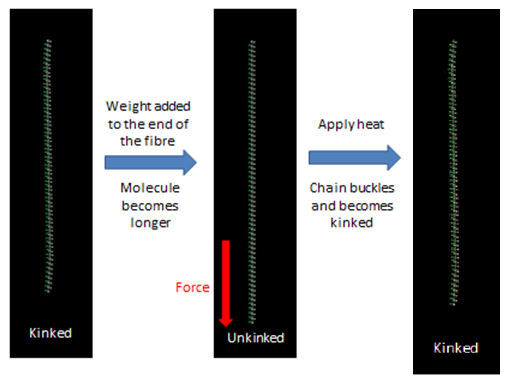Textile actuators
Start date: 2015-03-01
End date: 2018-06-30
We are investigating the actuator properties of semicrystalline polymer fibres that contract upon heating. An actuator converts energy into movement, e.g. a piston or a muscle. We are using atomistic simulations to gain greater understanding at the molecular level into what causes some polymers to show actuation on heating (i.e. thermal actuation) whilst other polymers show only a very small degree of (or no) actuation. This research is part of a larger collaboration between The University of Borås and The University of Skövde which seeks to utilise these actuators in robotics as artificial muscles.
The pictures below shows the actuation of a single Poly(vinylidene fluoride) (PVDF) molecule. It shows that the molecule becomes shorter (contracts) when heating. These simulations give us a deep mechanistic understanding of the reasons for the contraction, and allow us to search for other systems and conditions that give improved actuation properties.



